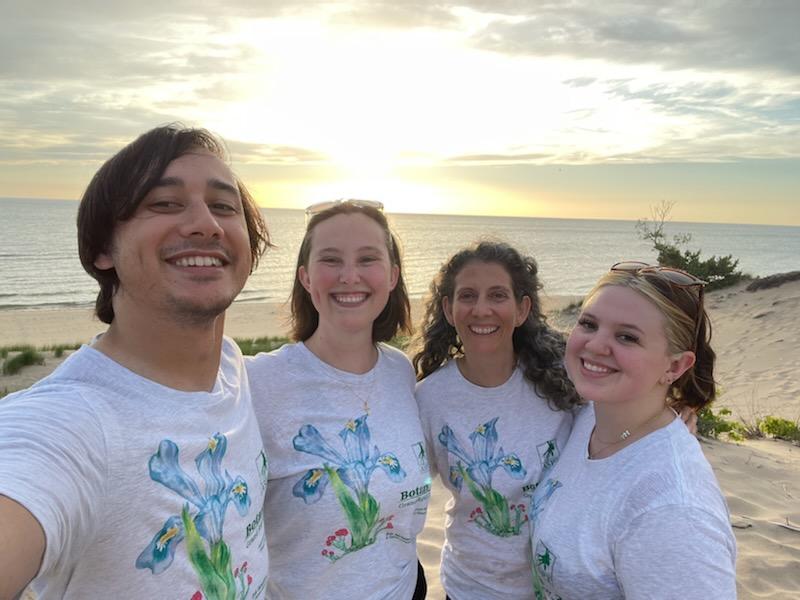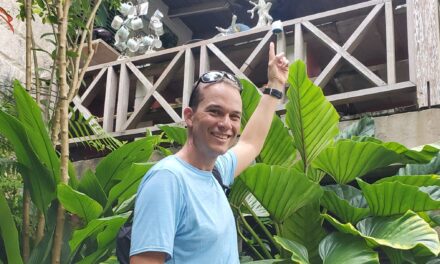In June 2024, the Botanical Society of America hosted the National Botany Conference in Grand Rapids, Michigan. Attendees learned more about a variety of research topics, including endangered species conservation, plant adaptation and environmental stressors.

Chris Duft (left), Leslie Taylor, Dr. Heather Sahli and Ekaterina Hampton (right), at Lake Michigan in Grand Rapids.
Heather Sahli, faculty member in the biology department, presented her ongoing research on the Pennsylvania endangered dwarf iris, Iris verna. Her research focuses on the reproductive limitation of this rare species, found primarily in southern Pennsylvania.
“This species of Iris reaches its northernmost distribution in Pennsylvania, and only a few populations exist here,” Sahli explained. “My students and I have been studying these populations to understand their basic biology, such as pollination, and to determine whether seed production is limited by pollinators or genetic diversity.” The research aims to identify why some populations produce more seeds than others and whether environmental factors, such as light availability or soil nutrients, play a part.
Sahli’s research will be reported to the Pennsylvania Department of Conservation and National Resources (DCNR) to help protect the remaining Iris verna populations in the state.
Sahli also discussed her research on local adaptations to salt spray in Mondara punctata, a plant belonging to the mint family. Sahli and students found that populations along the Atlantic coast have evolved a stronger tolerance to ocean spray in comparison to other populations. According to Sahli, one reason behind this tolerance is the higher levels of stomata, the tiny pores on the surface of leaves that regulate the exchange of gas.
In all of the research conducted by Sahli, student collaboration was vital. Alongside Sahli at the conference was undergraduate student’s Leslie Taylor and Ekaterina Hampton, and master’s student Chris Duff.
Duff presented research on various other topics, such as pollinators’ interaction with native flowers versus ornamental flowers. His research suggests that bees do not have strong preference to native flowers, although planting a combination of native species can support bee populations.
“My hands-on research gave me an opportunity to deeply research current pollinator conservation challenges and solutions. It was thrilling to temporarily turn 12 buildings on the Shippensburg University campus into pollinator habitats. Placing and caring for 120 plants around Shippensburg’s campus gave me a hands on opportunity to practice habitat restoration and management as well as create my own little pollinator conservation effort”, Duff explained.
“This experience allowed my students to communicate their work to a large audience of botanists and receive valuable feedback,” said Sahli.
Leslie Taylor, presented two posters on her research with Iris verna. Taylor described the experience as being a special moment within academic and professional journey.
“I enjoyed presenting and was pleased that my audience understood the background and methods I used,” Taylor said. “The feedback I received on specific details was encouraging, and it helped me feel more confident.”
Taylor enjoyed conducting hands-on research, expressing that it helped her further understand the importance of conservation. “My research has allowed me to formulate conservation strategies that will benefit real plant populations,” she said. “It has also blossomed into my thesis research, which I will soon defend at Shippensburg University.”
The National Botany Conference was a great opportunity for Sahli and students to showcase their research. Their ongoing work on the preservation of endangered plant species and ecosystems will continue to contribute to Ship U and the botany research field.




